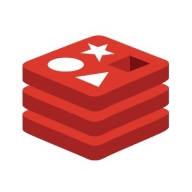

Microsoft Azure Cosmos DB and Redis compete in the cloud database and caching solutions category. Microsoft Azure Cosmos DB seems to have the upper hand for large enterprises seeking comprehensive features within the Microsoft ecosystem, whereas Redis is favored for its speed and simplicity.
Features: Microsoft Azure Cosmos DB offers robust multi-model support, global distribution, and seamless integration within Microsoft’s ecosystem, making it scalable, flexible, and secure. Users value its JSON-based storage and ease of integrating with AI and Microsoft services. Redis excels with its in-memory architecture, offering speed and performance. Its simple setup and high availability make it ideal for rapid data access and real-time analytics.
Room for Improvement: Microsoft Azure Cosmos DB could improve in handling complex queries and pricing models. Users desire better integration with third-party tools, alongside enhanced documentation for non-traditional queries. Redis needs better cluster management and stronger built-in security features. Users also seek improved GUI options and more comprehensive enterprise-grade features.
Ease of Deployment and Customer Service: Microsoft Azure Cosmos DB is designed for public cloud deployment, benefiting from Microsoft’s extensive support network. However, some users find the support lacking. Redis offers greater flexibility with on-premises and cloud options, generally receiving positive feedback for its simplicity and community support.
Pricing and ROI: Azure Cosmos DB is noted for its costly pricing and the complexity of cost prediction due to variable models. Its features may justify costs for large enterprises, with manageable ROI through cost optimization. As an open-source solution, Redis offers cost-effectiveness, especially for smaller deployments. Prices rise with setups requiring substantial memory, but its open-source nature provides a clearer ROI for caching.
Getting an MVP of that project would have taken six to eight months, but because we had an active choice of using Azure Cosmos DB and other related cloud-native services of Azure, we were able to get to an MVP stage in a matter of weeks, which is six weeks.
You can react quickly and trim down the specs, memory, RAM, storage size, etc. It can save about 20% of the costs.
When I have done comparisons or cost calculations, I have sometimes personally seen as much as 25% to 30% savings.
Premier Support has deteriorated compared to what it used to be, especially for small to medium-sized customers like ours.
The response was quick.
I would rate customer service and support a nine out of ten.
The system scales up capacity when needed and scales down when not in use, preventing unnecessary expenses.
We like that it can auto-scale to demand, ensuring we only pay for what we use.
We have had no issues with its ability to search through large amounts of data.
Data migration and changes to application-side configurations are challenging due to the lack of automatic migration tools in a non-clustered legacy system.
We have multiple availability zones, so nothing goes down.
Azure Cosmos DB would be a good choice if you have to deploy your application in a limited time frame and you want to auto-scale the database across different applications.
I would rate it a ten out of ten in terms of availability and latency.
Redis is fairly stable.
We must ensure data security remains the top priority.
You have to monitor the Request Units.
The dashboard could include more detailed RU descriptions, IOPS, and compute metrics.
Data persistence and recovery face issues with compatibility across major versions, making upgrades possible but downgrades not active.
Initially, it seemed like an expensive way to manage a NoSQL data store, but so many improvements that have been made to the platform have made it cost-effective.
Cosmos DB is expensive, and the RU-based pricing model is confusing.
Cosmos DB is great compared to other databases because we can reduce the cost while doing the same things.
Since we use an open-source version of Redis, we do not experience any setup costs or licensing expenses.
The most valuable feature of Microsoft Azure Cosmos DB is its real-time analytics capabilities, which allow for turnaround times in milliseconds.
Performance and security are valuable features, particularly when using Cosmos DB for MongoDB emulation and NoSQL.
The performance and scaling capabilities of Cosmos DB are excellent, allowing it to handle large workloads compared to other services such as Azure AI Search.
It functions similarly to a foundational building block in a larger system, enabling native integration and high functionality in core data processes.
| Product | Market Share (%) |
|---|---|
| Microsoft Azure Cosmos DB | 6.1% |
| Redis | 8.9% |
| Other | 85.0% |


| Company Size | Count |
|---|---|
| Small Business | 31 |
| Midsize Enterprise | 19 |
| Large Enterprise | 55 |
| Company Size | Count |
|---|---|
| Small Business | 11 |
| Midsize Enterprise | 3 |
| Large Enterprise | 8 |
Microsoft Azure Cosmos DB is a globally distributed, multi-model database service providing scalability, user-friendliness, and seamless integration, suitable for managing large volumes of structured and unstructured data across diverse applications.
Azure Cosmos DB is renowned for its scalability, stability, and ease of integration, offering robust support for multiple data models and APIs. Its capacity for handling unstructured data efficiently and providing real-time analytics makes it ideal for applications requiring high performance and global distribution. With features like automatic failover and integration with Microsoft products, users benefit from cost optimization and secure data handling. Enhancement opportunities include simplifying queries, improving documentation, and expanding backup and analytics functionalities.
What are the most important features of Microsoft Azure Cosmos DB?Azure Cosmos DB is frequently used in sectors like web, mobile, IoT, and analytics. It supports applications as a key-value store, processes real-time data, and enables global scalability with low-latency access. Its big data management capabilities and integration with Azure services enhance its utility across industries.
Redis offers high-speed, in-memory storage, renowned for real-time performance. It supports quick data retrieval and is used commonly in applications like analytics and gaming.
Renowned for real-time performance, Redis delivers high-speed in-memory storage, making it a favorite for applications needing quick data retrieval. Its diverse data structures and caching capabilities support a broad array of use cases, including analytics and gaming. Redis ensures robust scalability with master-slave replication and clustering, while its publish/subscribe pattern renders it reliable for event-driven applications. The solution integrates smoothly with existing systems, minimizing performance tuning needs. Although documentation on scalability and security could be improved, Redis remains cost-effective and stable, commonly utilized in cloud environments. Enhancing integration with cloud services like AWS and Google Cloud and refining GUI may improve usability.
What are the key features of Redis?Redis finds application across industries for tasks like caching to improve application performance and speed, minimizing database load. It enables real-time processing for session storage, push notifications, and analytics. As a messaging platform, Redis handles high traffic and supports replication and clustering for cross-platform scalability.
We monitor all NoSQL Databases reviews to prevent fraudulent reviews and keep review quality high. We do not post reviews by company employees or direct competitors. We validate each review for authenticity via cross-reference with LinkedIn, and personal follow-up with the reviewer when necessary.